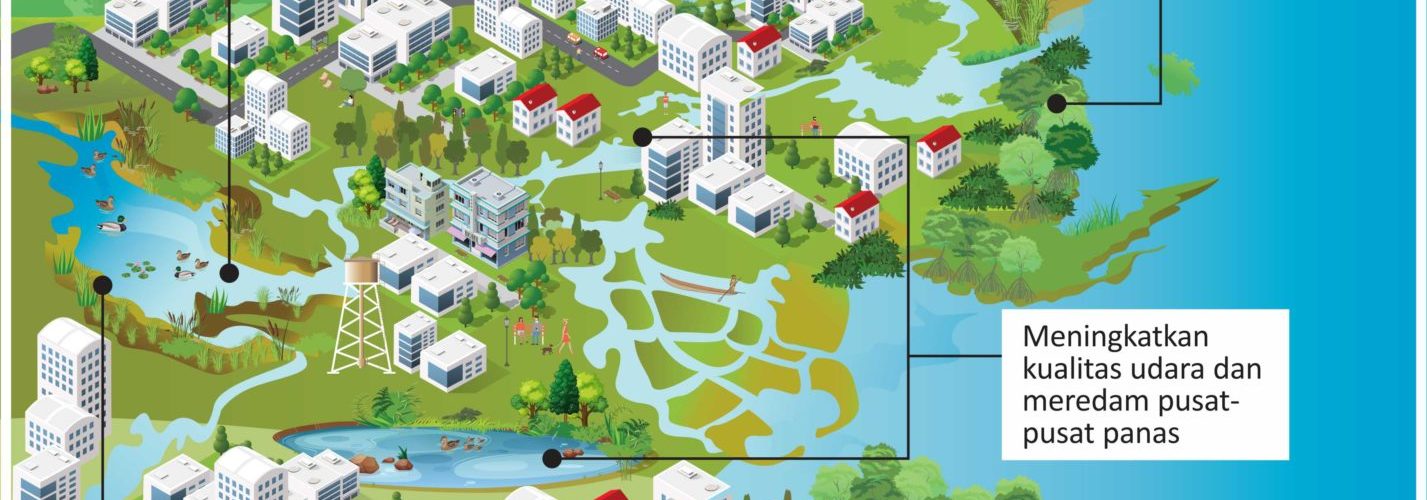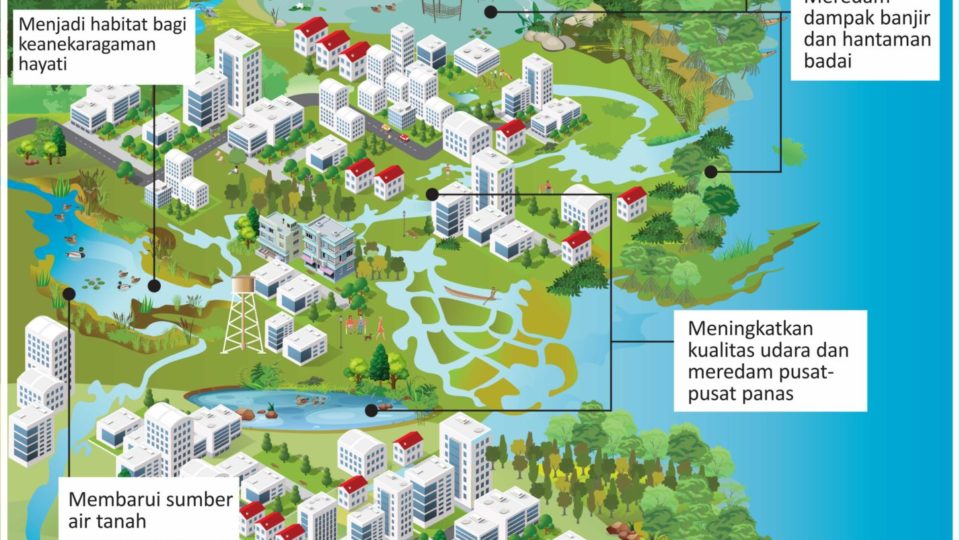On February 2nd every year, the world celebrates World Wetlands Day. This date was officially announced as World Wetlands Day since 1997, commemorating an international agreement to conserve wetlands that was adopted on February 2, 1971 in Ramsar city, Iran. The international agreement since then was acknowledged as the Ramsar Convention. Indonesia has ratified the Ramsar Convention since 1991 through a Presidential Decree 48/ 1991.
Currently, Indonesia has a total of 7 wetland locations that have been acknowledged as Ramsar Sites, namely: Berbak National Park, Sembilang National Park (later combined together into Berbak-Sembilang National Park), Rambut Island Wildlife Reserve, Sentarum Lake National Park (now combined into Sentarum Lake-Batang Kerihun National Park), Tanjung Puting National Park, Rawa Aopa Watumohai National Park, and Wasur National Park. Commemoration of the World Wetlands Day is basically an effort to continuously increase awareness on the importance of wetlands for both human beings and the planet earth. For this year 2018, the general theme is “Wetlands for a sustainable urban future”. This theme was originated from the consideration that almost half of the current total population of the world live in the urban areas. This number is anticipated to increase, both due to the increasing number of people living in the urban hinterland, or also because of an increasing number of people moving into the city for a better life. Therefore, there is a growing urgency for an urban area that must not only provide the basic needs for its inhabitants, such as food, shelter, and clothing, but also the growing of other needs, such as security, resilience, and environmentally-friendly living environment.
“Today’s current development of human settlements is a major concern for wetland conservation and wise use. As cities grow and demand for land increases, the tendency is to encroach on wetlands. They are often viewed as wasteland available to dump waste or be converted for other purposes,” conveyed Martha Rojas Urrego, Secretary General of the Ramsar Convention on Wetlands, based in Gland, Swiss. On the other hand, if wisely conserved and utilized, wetlands can serve a range of economic, social, and cultural benefits. Therefore, there is a need to incorporate wetlands into urban development planning and management.
Yus Rusila Noor, head of Programme Wetlands International Indonesia, stated that this year’s World Wetlands Day’s theme is very relevant with the progression of urban wetlands in Indonesia. “Several big cities in Indonesia has undergone complex problems due to the decreasing functions of urban wetlands. One among others is the more frequent tidal floods and land subsidence issues, which is the result of excessive ground water extraction”, added Yus. Several cities in the northern coast of Java has suffered from the loss of mangrove due to conversion into fish ponds within the coastal area, which then caused coastal abrasion.
The Indonesian government has actually worked really hard to anticipate ecological disasters due to the decreasing function of coastal wetlands. Apri Susanto, Wetlands International Indonesia’s manager for the Building with Nature program explained that currently semi-permeable structures incorporating natural mechanisms are being set up along the coastal areas of Demak district. This activity that is being supported by, among others, the Ministry of Marine Affairs and Fisheries and the Ministry for Public Works and People’s Housing is intended to create a coastal area that is conducive to natural mangrove restoration. In the long term, this activity, combined with community economic development, is expected to restore the natural functions of mangrove to protect the coastal area, including in increasing the people’s resilience.
“The effort to increase people’s resilience towards natural disasters will become more effective should there be integration between all factors that reduce disaster risks, climate change adaptation, and sustainable ecosystem restoration and management, or what is known as the Integrated Risk Management approach” conveyed Susan Lusiana, from the Indonesia-Netherland consortium – Partners for Resilience. If well-functioning, wetlands can
actually reduce flood risk reduction and function as waste filter. Moreover, wetlands also plays the role in improving the quality of air and water, ensuring the continuous supply of clean water, and provide a better place for humans to live and make a living. In her note on the World Wetlands Day 2018, the Secretary General of
the Ramsar Convention on Wetlands encourages all cities in the world to apply policies and actions that will help conserve urban wetlands. There are a number of cities in the world that have successfully apply their commitment to make wise use of urban wetlands, and therefore can become model for other cities. Cities that have succeeded in applying the concept will be granted an award of Wetland City Accreditation by the Ramsar Convention. The award will be delivered on the 13th Conference of Parties in Dubai, October 2018. Let us all put an extra effort to earn ourselves a city that can provide us a better living through protection, conservation, and restoration of urban wetlands. Let us achieve more livable, vibrant cities.
For more information, contact:
Maulyati Nuraini Slamet – Policy Advocacy and Communications Coordinator Wetlands International Indonesia.
E-mail: [email protected] | Ph. +62 818 417730

Urban Wetlands Make Vibrant Cities
download
